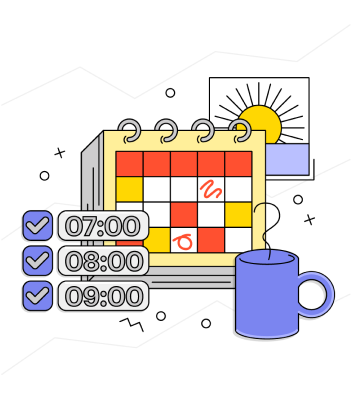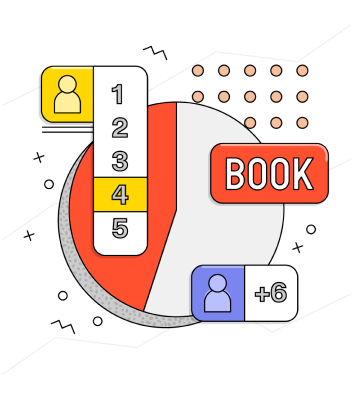Section 1
How does the time of a booking affect the length of meetings or the size of the booked resource?
There is only a slight variation when it comes to analysing how the time of a booking affects various factors, such as the booking length and size of the resource booked.
In all studied areas, we see that meetings booked early in the morning have the longest duration. This average duration goes down during the middle portion of the day, with bookings once again extending from 6pm onwards.
Key findings

Mean duration in minutes by location
As we discussed above, all three of the studied markets generally follow the same trend, of longer meetings in the morning, which then drop before rising once again in length in the late afternoon. Spain however, is more of an outlier,with the mean duration of bookings being lower than that of other markets such as the US and UK.
Mean resource capacity by booking hour and location
Once again, all three of the studied markets are largely aligned when it comes to how a booking’s time affects the size of the booked resource. Interestingly, the slight increase in the average size of booked resources around 6pm is an indicator of social activity in workspaces.
US - Spaces with fewer than 40 members see more activity after 6pm, a time when work activity is not usually carried out.
UK - The average capacity of booked resources between 10am and 4pm remains stable at around 6 users.
Spain - Bookings starting between 8 AM and 10 AM have the highest mean duration, ranging from 120-140 minutes.
Booking distribution by time of the day
When the distribution of bookings across the day is analysed across the US, UK and Spain some interesting cultural trends begin to appear. As might be imagined, the US and the UK are largely aligned in this area, with the number of bookings peaking at around 9am, and then declining steadily throughout the day, except for a slight dip in the lunch period.
This trend is not followed in the Spanish market however, which can largely be attributed to the cultural differences that are obvious. As the graph below shows bookings in Spain peak at around 10am, with a significant drop at 2pm. This difference shows how working culture differs significantly due to cultural trends in a given market.
Section 2
How does the capacity of a resource affect the number of bookings it receives?
One of the great concerns that operators have when deciding how to handle the layout of a new location is the number and capacity of resources that should be made available to members.
The following graphs give an illuminating insight into how the resources of different capacities are more or less popular with the users of flexible workspaces among the three studied markets. The following section should, therefore, paint a very clear picture of how to optimise resources in terms of their capacity.
Key findings

Booking distribution by capacity
Section 3
What is the mean price of a booking depending on the type of user that is using the resource?
The extent to which the price of a booking changes depending on the type of user that is accessing provides an intriguing area of study.
In real terms we are essentially trying to establish the relationship that exists between contacts and members, and how the price of any given resource changes depending on which is trying to access it.
Across each of the studied markets, the base price of resource booking made by a contact has a significantly higher price than that of a member. Such findings can be of particular interest in terms of where to focus marketing efforts.
Key findings

Mean Final hourly price
The below graph displays how the mean final hourly price has changed over the years in the three markets studied. Interestingly, but not altogether surprisingly, we see a significant jump in price in March 2020 with the onset of the global pandemic.
Mean price by customer type
As we mentioned at the beginning of this section, there is a significant gap between the average price of a resource between members and contacts. Interestingly, this gap is replicated across each of the studied markets, although there is some variation when the size of flexible workspace in question is taken into account.
Mean hourly price by plan category
The graphs depicted below display how the mean hourly price of a resource changed according to the type of resource being booked.

